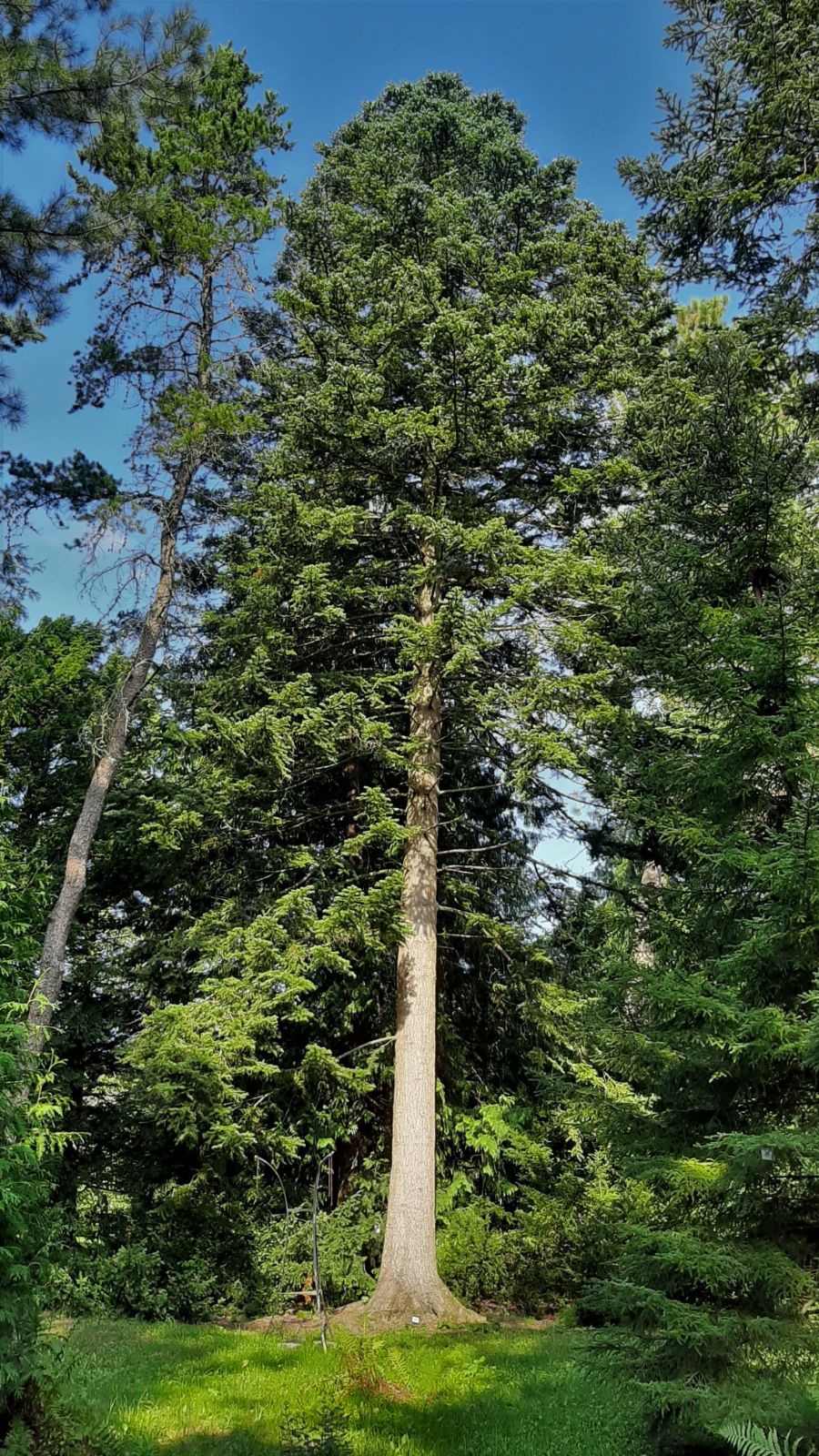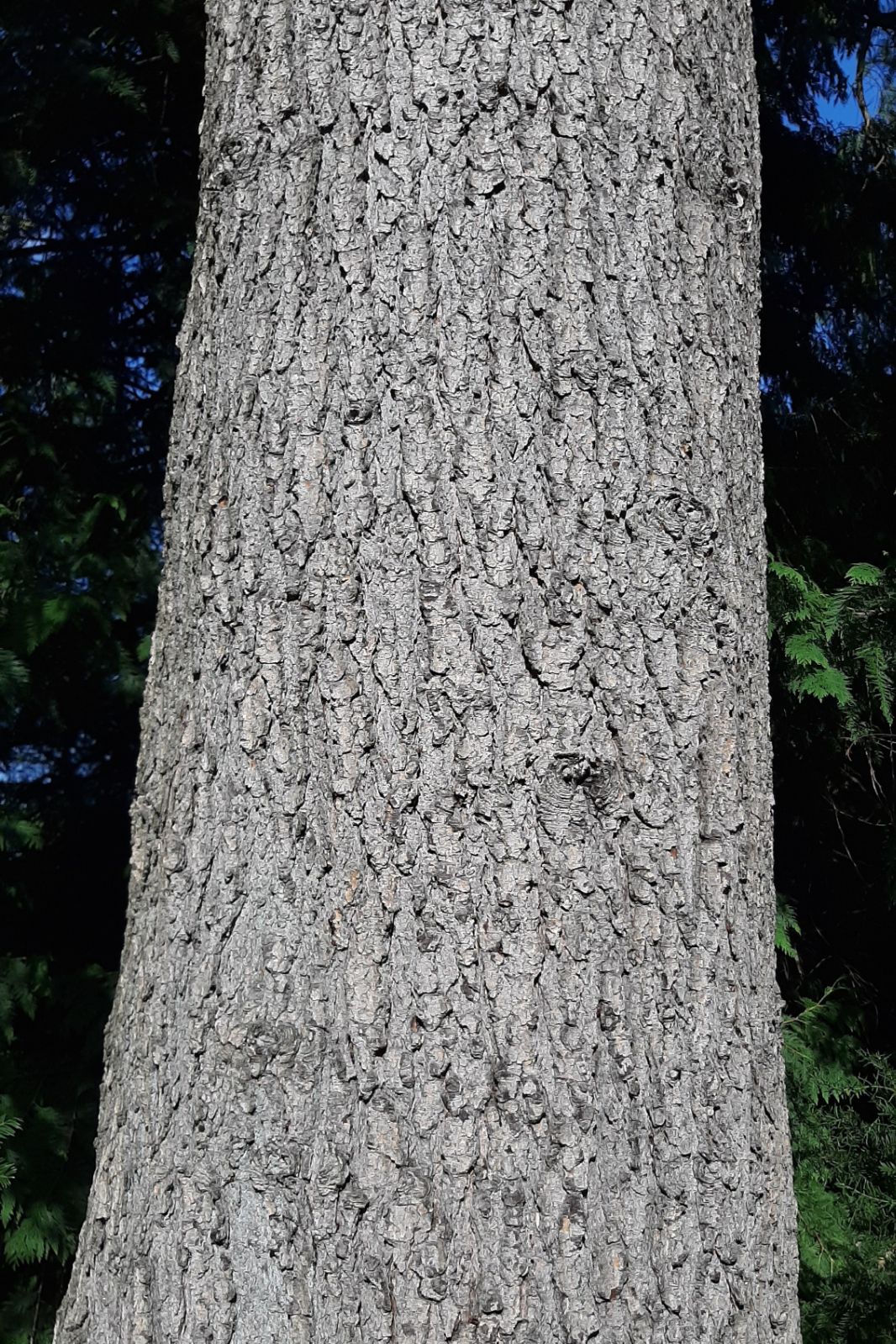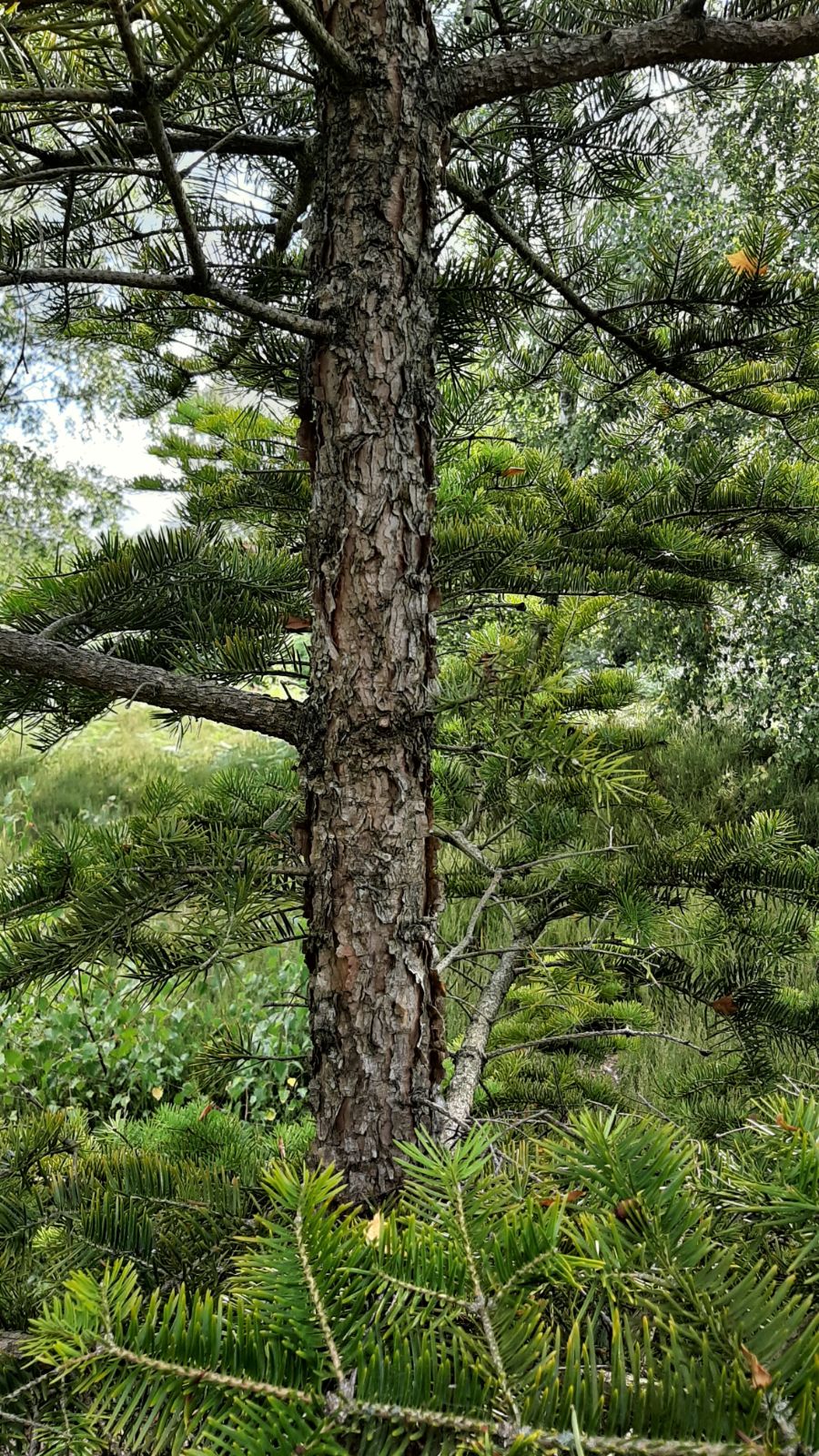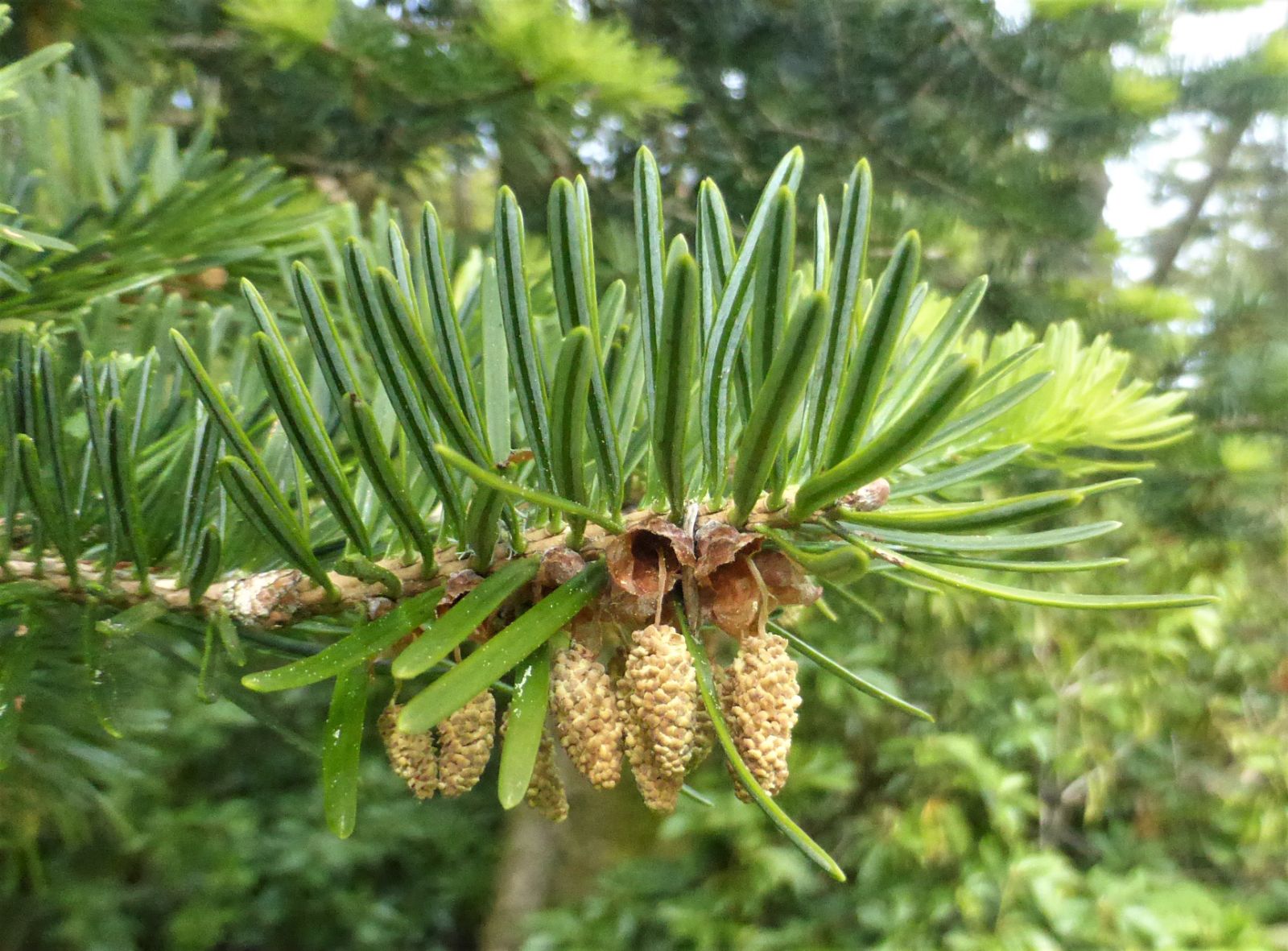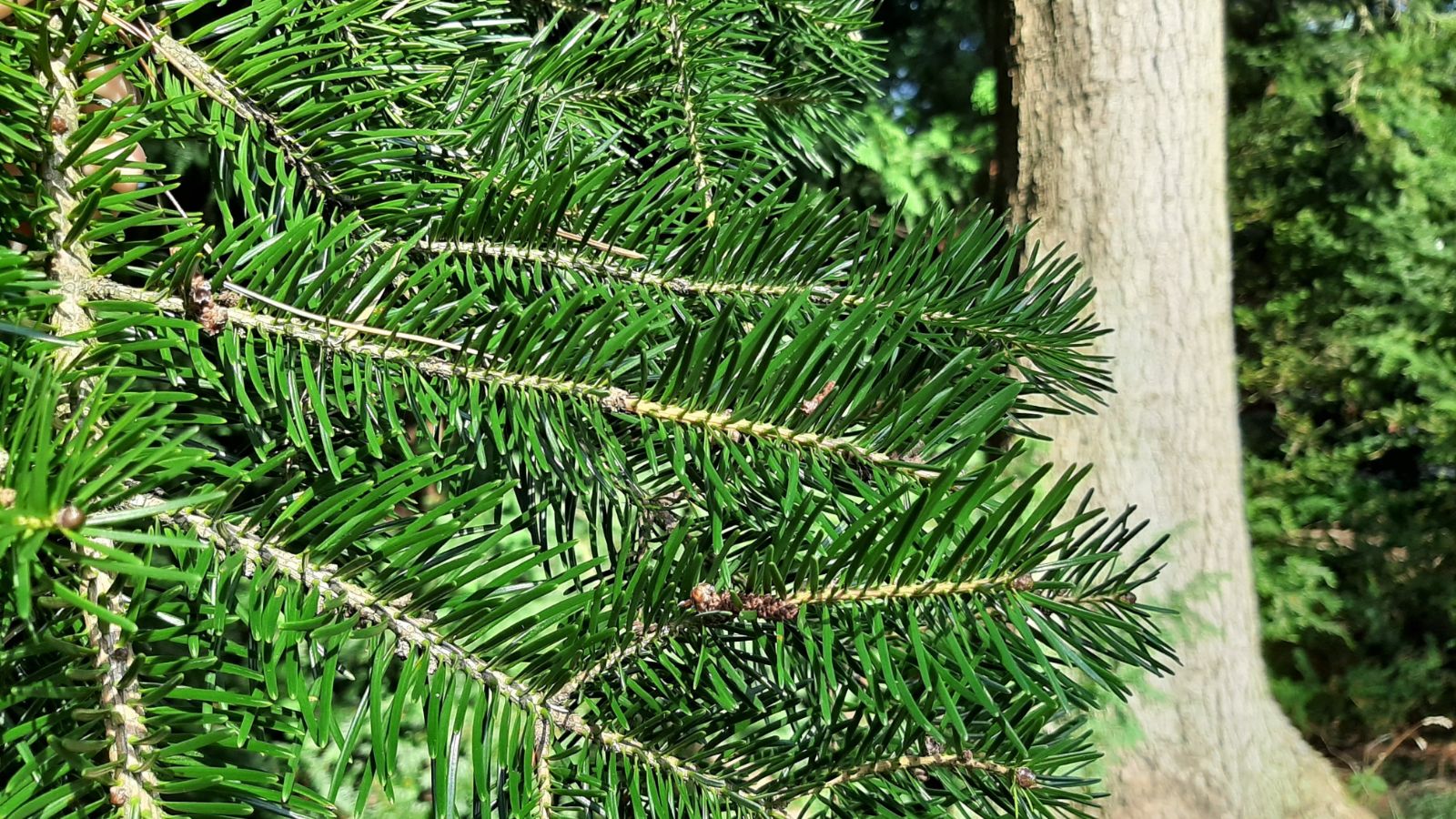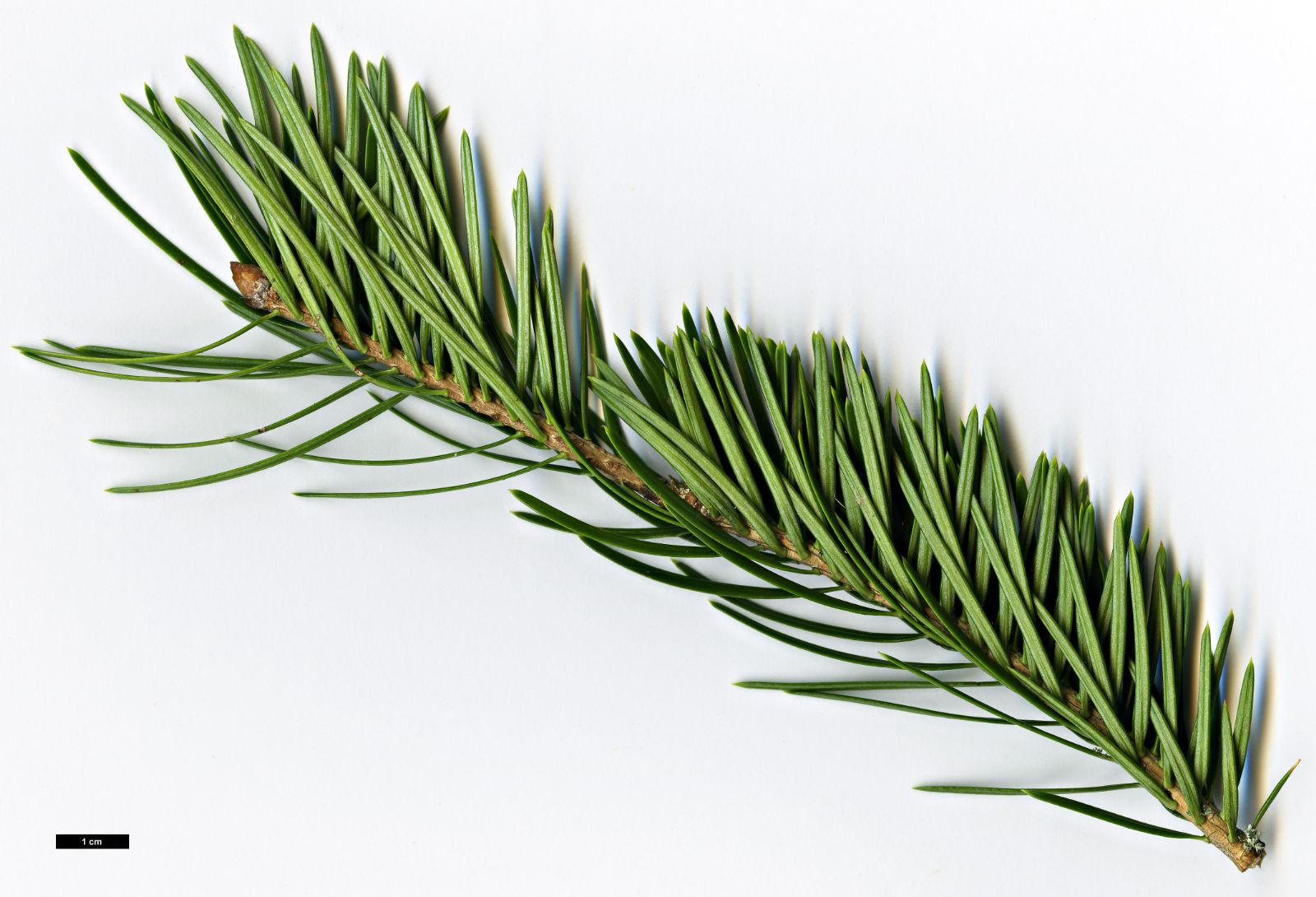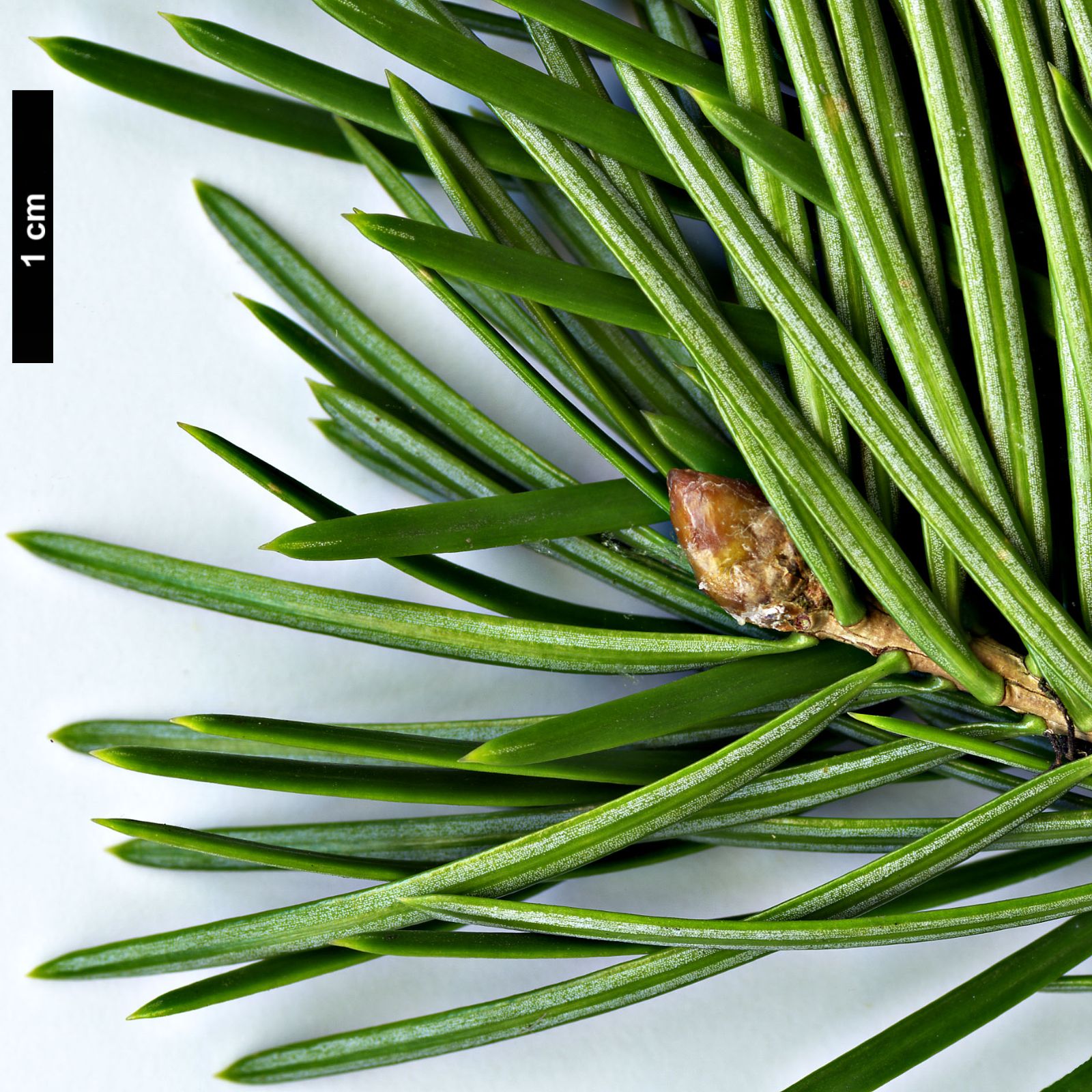Abies holophylla
Sponsor
Kindly sponsored by
Sir Henry Angest
Credits
Tom Christian (2021)
Recommended citation
Christian, T. (2021), 'Abies holophylla' from the website Trees and Shrubs Online (treesandshrubsonline.
Genus
Common Names
- Manchurian Fir
- Needle Fir
- Shan Song
Other taxa in genus
- Abies alba
- Abies amabilis
- Abies × arnoldiana
- Abies balsamea
- Abies beshanzuensis
- Abies borisii-regis
- Abies bracteata
- Abies cephalonica
- Abies × chengii
- Abies chensiensis
- Abies cilicica
- Abies colimensis
- Abies concolor
- Abies delavayi
- Abies densa
- Abies durangensis
- Abies ernestii
- Abies fabri
- Abies fanjingshanensis
- Abies fansipanensis
- Abies fargesii
- Abies ferreana
- Abies firma
- Abies flinckii
- Abies fordei
- Abies forrestii
- Abies forrestii agg. × homolepis
- Abies fraseri
- Abies gamblei
- Abies georgei
- Abies gracilis
- Abies grandis
- Abies guatemalensis
- Abies hickelii
- Abies homolepis
- Abies in Mexico and Mesoamerica
- Abies in the Sino-Himalaya
- Abies × insignis
- Abies kawakamii
- Abies koreana
- Abies koreana Hybrids
- Abies lasiocarpa
- Abies magnifica
- Abies mariesii
- Abies nebrodensis
- Abies nephrolepis
- Abies nordmanniana
- Abies nukiangensis
- Abies numidica
- Abies pindrow
- Abies pinsapo
- Abies procera
- Abies recurvata
- Abies religiosa
- Abies sachalinensis
- Abies salouenensis
- Abies sibirica
- Abies spectabilis
- Abies squamata
- Abies × umbellata
- Abies veitchii
- Abies vejarii
- Abies × vilmorinii
- Abies yuanbaoshanensis
- Abies ziyuanensis
Tree 30–50 m × 1–1.5 m dbh. Crown broad-pyramidal, often abruptly narrowing near the top in young trees. Bark of young trees smooth, buff-grey to buff-orange; shallowly fissured, irregularly scaly, brown to pale grey-brown in mature trees. First order branches long, spreading, soon horizontal, second order branches horizontal or slightly assurgent. Branchlets sturdy, yellowish or buff at first, soon pinkish-grey or buff-grey, shining, glabrous or with minute pubescence confined to grooves in 1st year shoots, soon glabrous. Vegetative buds ovoid globular, 4–8 × 3–5 mm on leading shoots, somewhat resinous, reddish-brown. Leaves on vegetative branches more or less pectinate when shaded, somewhat assurgent on leading shoots and shoots growing in good light, generally parted beneath the shoot by a ‘V’ and a proportion upright or nearly so above the shoots, 2–4.5 cm × 1.5–2.5 mm, twisted or curved at base, linear, tapering to an acute or rounded apex, shining pale green above, with two dull grey-green stomatal bands beneath separated by a prominent dark green midrib. Pollen cones clustered, stalked, 1–1.5 cm long, yellowish with red microsporophylls. Seed cones short-pedunculate, oblong-cylindrical with an obtuse or truncate apex, 6–14 × 3–4.5 cm, pale green ripening through yellowish green to yellowish brown at maturity; seed scales flabellate, 2 × 3 cm at midcone; bracts included at maturity, or a few tips slightly exserted near the base. (Farjon 2017; Debreczy & Rácz 2011; Fu et al. 1999).
Distribution China Heilongjiang, Jilin, Liaoning North Korea South Korea Russia From the Vladivostok Peninsula south and west to adjacent regions of China and the Korean Peninsula
Habitat In a range of forest types from 10–1500 m asl across its range, at high altitude and in northern outposts often forming pure stands or mixed-coniferous forest with Pinus koraiensis, otherwise occurring in mixed forests with Abies nephrolepis, Larix gmelinii, Populus spp., Quercus mongolica, Fraxinus mandshurica and Betula ermanii. The climate is characterised by cool wet summers and long, cold winters with significant snow cover.
USDA Hardiness Zone 5
RHS Hardiness Rating H7
Conservation status Near threatened (NT)
Abies holophylla seems never to have generated much excitement in gardens. Mitchell (1972) discusses it only briefly and in a most matter-of-fact way – anyone familiar with his works will know he is not reluctant to make his favour (or disdain) for different trees plain to his readers, yet the Manchurian Fir is covered swiftly in a few lines devoid of any emotion. Krüssmann (1985) follows suit, and Rushforth (1987) largely does the same, although he notes it is ‘unusual’ and comments on the bark, which can be attractively flaky. Most incarnations of the Hillier Manual are similarly non-committal.
Perhaps because it was a relative latecomer to gardens, introduced in 1898, or perhaps because it has never been available in significant quantity, it has had few opportunities to inspire. Yet following his visit to Korea, Wilson described A. holophylla as ranking with A. homolepis as the most ornamental of the Asiatic Firs then known (Wilson 1919), but by the time the first generation of cultivated trees was becoming old enough to be given due credit, the inconceivable floristic wealth of south-west China was flooding into western gardens, and the many and varied conifers of that region no doubt monopolised the attentions of the coniferously inclined. This is a pity, for the Manchurian Fir is a tree with many merits; it is tough, exceptionally cold hardy, yet also one of the few Asian firs that can tolerate some heat and (modestly) dry soils. Though its seed cones are rarely produced in cultivation, it is at all stages quite an ornamental tree on account of its handsome foliage and stature, and, as already noted, some trees have attractively flaking bark.
Native to that part of north-east Asia still most efficiently described by its English name, Manchurian Fir occurs across swathes of north east Russia, adjacent areas of north-easternmost China, and south into the northern Korean peninsula. It is characteristic of the cool temperate forests of this region which, in places, support a remarkable fauna, including the endangered Siberian Tiger and the critically endangered Amur Leopard (Andersson & Goodall 2015). In large parts of its range it is utilised as a timber tree in managed forests, which until recently have been managed sensibly, but as global timber demand grows the intensity of management is increasing.
Credit for the first introduced to cultivation is usually given to the Russian botanist V.L. Komarov, who sent seed to western Russian gardens in 1898, but Liu (1971) suggests Maximowicz gathered material with mature cones in September 1869. Perhaps Maximowicz retained all his material for the herbarium, or any seed he sent for propagation failed to germinate. Seed arrived at the Arnold Arboretum in the US in 1904, when the Japanese botanist T. Uchiyama sent material of Korean provenance (Jacobson 1996) which Wilson later introduced again c. 1918 (Bean 1976). There is a magnificent tree at the Gothenburg Botanic Garden, Sweden (accession 1951–3764/1) c. 30 m × 0.6 m dbh in 2019 (pers. obs.), surely among the best cultivated examples anywhere. Jacobson (1996) notes a 1980 record from Philadelphia, Pennsylvania, of a tree 18.6 m × 0.6 m dbh. The largest extant trees in the UK grow in collections in Highland Perthshire and adjacent Angus in Scotland, characterised by cool summers and cold, wet winters. The best is a tree 25 m × 0.88 m dbh (in 2017) at Pitcarmick, Perthshire. In the more benign climate of southern Britain there are trees to 22 m and 23 m at Bedgebury and Westonbirt respectively, with numerous others scattered in collections across the UK and Ireland (Tree Register 2020).
There are curious occurrences of young trees scattered through collections across our area. Two young trees c. 15 years of age at Bicton Park Botanical Gardens, Devon, UK, were sourced from the Dulford Nurseries as the much rarer A. squamata, perhaps raised from seed sent by an unscrupulous merchant, or perhaps misidentified in the nursery on account of their bark by an over-optimistic member of staff, for they were both revealed to be A. holophylla during a recent verification exercise (pers. obs. 2018). More recently, and adding intrigue to matters, a tree bought as A. delavayi in 2018 and planted at the Val de la Mare arboretum on Jersey is also A. holophylla (pers. obs. 2019). This was also obtained from the Dulford nurseries in Devon, which have since closed. It is occasionally collected by Botanic Gardens, for example there are trees at various institutions in both North America and in Europe derived from collections made by Smith College Botanic Garden on Mt Pirobong in South Korea in 1993. The University of Helsinki Botanic Garden collected it in Jilin Province, China, in 1994, while the Nordic Arboretum Committee consortium previously collected it in South Korea in 1976.
Manchurian Fir can quickly be recognised by a combination of characters: glabrous, shining shoots, yellowish-grey often with a pinkish tinge; stiff needles with an obtuse, occasionally acute apex, but never notched; and needles assurgent above the shoots when grown in good light, even on sterile branches. It is occasionally referred to as the Amur Fir, but this is a name more often associated with A. nephrolepis.

